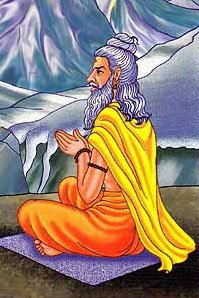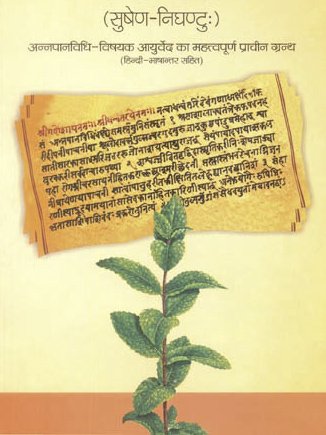Satyavak, Satyavāk: 4 definitions
Introduction:
Satyavak means something in Hinduism, Sanskrit. If you want to know the exact meaning, history, etymology or English translation of this term then check out the descriptions on this page. Add your comment or reference to a book if you want to contribute to this summary article.
In Hinduism
Purana and Itihasa (epic history)
Source: archive.org: Puranic Encyclopedia1) Satyavāk (सत्यवाक्).—A son of Cākṣuṣa Manu. Ten sons including Satyavāk, were born to Cākṣuṣa Manu by his wife Naḍvalā. (Agni Purāṇa, Chapter 18).
2) Satyavāk (सत्यवाक्).—A Deva Gandharva. This Gandharva was the son born to Prajāpati Kaśyapa by his wife Muni. (Mahābhārata Ādi Parva, Chapter 65, Verse 43).
Source: Cologne Digital Sanskrit Dictionaries: The Purana IndexSatyavāk (सत्यवाक्).—A son of Cākṣuṣa Manu.*
- * Brahmāṇḍa-purāṇa II. 36. 79. Matsya-purāṇa 4. 41: Vāyu-purāṇa 62. 67 and 91.
Satyavāk (सत्यवाक्) refers to one of the sons of Kroṣṭā and grandson of Yadu, according to the Vaṃśānucarita section of the 10th century Saurapurāṇa: one of the various Upapurāṇas depicting Śaivism.—Accordingly, [...] Nahuṣa married Virajā (the daughter of Pitṛ) and was blessed with five sons of whom Yayāti was the most famous. Yayāti had two wives—Devayānī and Śarmiṣṭhā. Devayānī gave birth to Yadu and Turvasu. [...] The Son of Yadu was Kroṣṭā in whose race the most glorious kings were born. The text only names them as [viz., Satyavāk].

The Purana (पुराण, purāṇas) refers to Sanskrit literature preserving ancient India’s vast cultural history, including historical legends, religious ceremonies, various arts and sciences. The eighteen mahapuranas total over 400,000 shlokas (metrical couplets) and date to at least several centuries BCE.
Ayurveda (science of life)
Source: gurumukhi.ru: Ayurveda glossary of termsSatyavāk (सत्यवाक्):—Truthful speaking

Āyurveda (आयुर्वेद, ayurveda) is a branch of Indian science dealing with medicine, herbalism, taxology, anatomy, surgery, alchemy and related topics. Traditional practice of Āyurveda in ancient India dates back to at least the first millenium BC. Literature is commonly written in Sanskrit using various poetic metres.
See also (Relevant definitions)
Starts with: Satyavaka, Satyavakkriti, Satyavakta, Satyavaktri, Satyavakya, Satyavakyata.
Query error!
Full-text: Satyavakkriti, Purohita, Agnishtu, Uru, Nadvala, Kroshta, Kali, Kuru.
Relevant text
Search found 16 books and stories containing Satyavak, Satyavāk; (plurals include: Satyavaks, Satyavāks). You can also click to the full overview containing English textual excerpts. Below are direct links for the most relevant articles:
Rivers in Ancient India (study) (by Archana Sarma)
3e. Some epithets of Sarasvatī in the Brāhmaṇas < [Chapter 3 - The Rivers in the Brāhmaṇa Literature]
Puranic encyclopaedia (by Vettam Mani)
Brihad Bhagavatamrita (commentary) (by Śrī Śrīmad Bhaktivedānta Nārāyana Gosvāmī Mahārāja)
Verse 2.2.36 < [Chapter 2 - Jñāna (knowledge)]
Verse 1.6.22 < [Chapter 6 - Priyatama (the most beloved devotees)]
Maha Prajnaparamita Sastra (by Gelongma Karma Migme Chödrön)
Part 1.1 - The Pañcaśīla < [Section II.1 - Morality of the lay person or avadātavasana]
Part 2 - Punishments for falsehood < [Section I.4 - Abstention from falsehood]
Harivamsha Purana (by Manmatha Nath Dutt)
Chapter 104 - Krishna’s Children < [Book 2 - Vishnu Parva]
Chapter 7 - An Account of Manvantaras < [Book 1 - Harivamsa Parva]
Nighantu (critical study) (by Gopalakrishna N. Bhat)
Part 8 - Usonamani (Ushas Nama) < [Chapter 3 - First Adhyaya (chapter) of the Nighantu (study)]